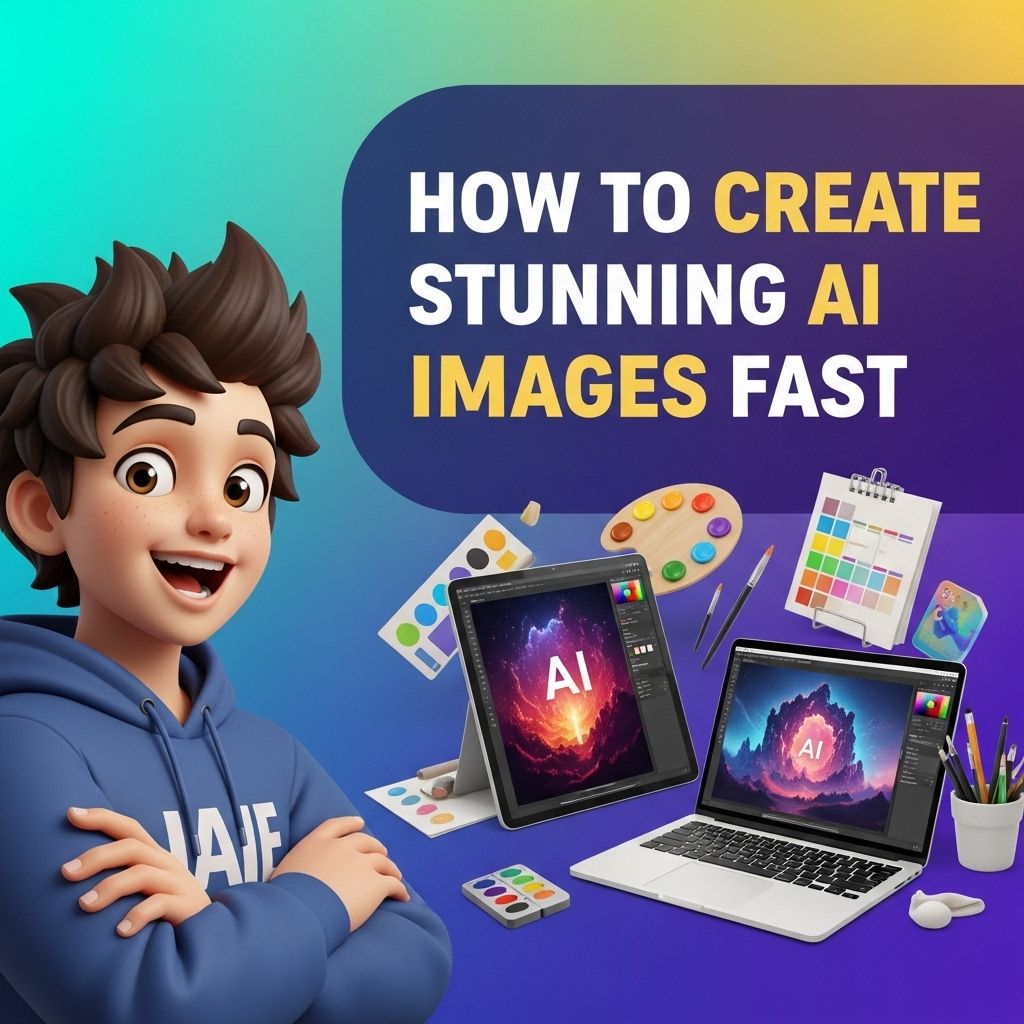The world of artificial intelligence has transformed the way we understand and create visual content. With advancements in AI image generation, artists, marketers, and tech enthusiasts can now produce stunning images faster than ever before. This article will guide you through the various tools and techniques that allow for rapid AI image creation, ensuring that your creative projects can flourish in an ever-evolving digital landscape.
Understanding AI Image Generation
Before diving into the tools and techniques, it’s essential to understand what AI image generation entails. AI image generation refers to the process wherein algorithms use existing images, patterns, and data to create unique visuals. This process typically involves machine learning, which allows computers to learn from data and make predictions or generate content based on that information.
Key Technologies Behind AI Image Generation
- Generative Adversarial Networks (GANs): These are a class of machine learning frameworks where two neural networks contest with each other. One network generates candidates while the other evaluates them, leading to high-quality image outputs.
- Neural Style Transfer: This technique takes the style of one image and applies it to the content of another, allowing for creative and visually appealing results.
- Variational Autoencoders (VAEs): VAEs are used to generate new images by learning the distribution of input data.
Popular AI Image Generation Tools
Several tools stand out in the realm of AI image generation, providing users with efficient and powerful capabilities. Below is a list of some of the most popular options available:
- DALL-E: Developed by OpenAI, DALL-E can create images from textual descriptions, allowing users to generate intricate visuals by simply describing them.
- DeepArt: This tool utilizes neural networks to apply artistic styles to images, enabling users to create artwork that resembles famous painters.
- Artbreeder: By combining images and allowing users to adjust parameters, Artbreeder enables collaborative and iterative creativity.
- Runway ML: Aimed at creatives, Runway ML offers various AI tools, including image generation, video editing, and more, all in an intuitive interface.
- NightCafe Studio: This platform focuses on creating art with AI through various algorithms, catering to both casual users and professional artists.
Steps to Create Stunning AI Images Quickly
Step 1: Choosing the Right Tool
Selecting the right AI image generation tool is crucial. Consider your requirements: Are you looking for a tool that generates images from text, or do you want to apply artistic styles to existing photos? Based on your preference, choose an appropriate tool from the list provided.
Step 2: Understanding Input Requirements
Most AI tools require specific input formats. Familiarize yourself with the requirements of your chosen tool:
- Text Prompts: If using a text-to-image generator, prepare detailed and descriptive prompts.
- Image Uploads: For style transfer tools, ensure your input images are high-quality and meet the platform’s size requirements.
Step 3: Experimenting with Parameters
Many AI tools offer adjustable parameters that influence the output. Experiment with these settings to achieve the desired results:
| Parameter | Description |
|---|---|
| Creativity Level | Controls the amount of variation in the generated images. |
| Style Strength | Determines how strongly the chosen style is applied to the image. |
| Resolution | Affects the quality and detail of the output image. |
Step 4: Generating and Refining Images
Once you have set your parameters, initiate the image generation process. Review the outputs carefully:
- Identify the images that resonate with your vision.
- Refine the prompt or parameters based on the results.
- Repeat the process until you achieve a satisfactory outcome.
Best Practices for Stunning AI Images
1. Be Descriptive in Prompts
When using text prompts, specificity is key. Instead of writing “a dog,” consider a more vivid description like “a golden retriever playing in a sunlit park with blooming flowers.”
2. Use High-Quality Inputs
If your tool supports image uploads, ensure they are of high quality. The better the input, the better the output.
3. Embrace Iteration
AI image generation is often an iterative process. Don’t hesitate to refine your inputs and settings based on the images you receive.
4. Combine Outputs for Unique Creations
Consider using multiple tools or combining outputs from different generators to create unique visuals.
Conclusion
AI image generation has opened up a world of possibilities for artists and creators alike, making it easier to produce stunning visuals quickly and efficiently. By understanding the tools at your disposal and employing best practices, you can harness the power of AI to elevate your creative projects to new heights. Whether you’re crafting illustrations for a book, designing marketing materials, or simply exploring the boundaries of art, AI is here to assist you in your journey of creativity.
FAQ
What are the best tools to create stunning AI images quickly?
Some of the best tools include DALL-E, Midjourney, and Stable Diffusion, which allow users to generate high-quality images in a matter of seconds.
Can I create AI images without any design skills?
Yes, many AI image generation tools are user-friendly and require no prior design experience, making it easy for anyone to create stunning visuals.
How do I optimize my prompts for better AI image results?
To optimize prompts, be specific about the subject, style, and mood you want in your image. Experimenting with different wording can also yield better results.
Are there any limitations to AI-generated images?
Yes, limitations may include the inability to generate highly detailed images in certain contexts and restrictions based on the training data of the AI model.
How can I use AI-generated images for my business or projects?
AI-generated images can be used for marketing materials, social media posts, website graphics, and more, providing unique visuals that capture attention.

